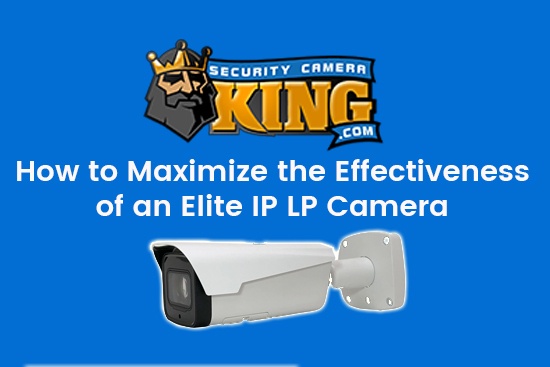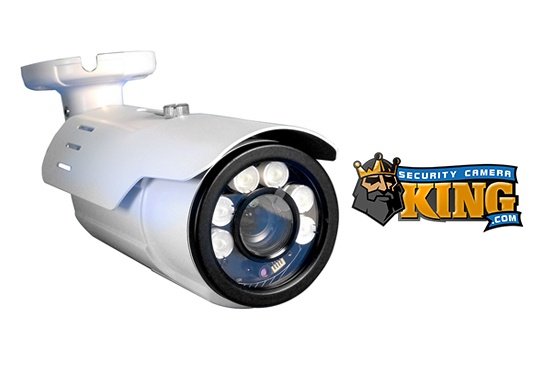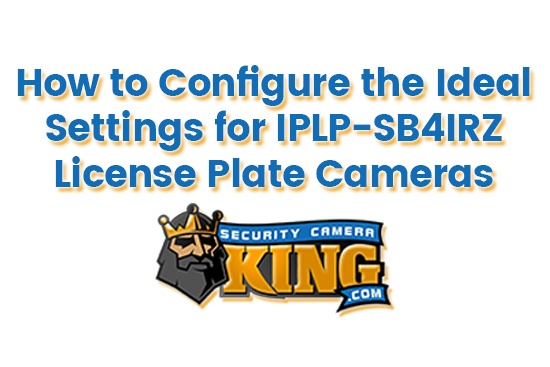Cameras properly positioned to capture license plate information can be extremely beneficial in almost any location. However, they require proper setup, positioning, and should be placed appropriately. In this article we will discuss the best practices for installing and setting up a license plate camera as well as the many benefits of having one in place.]
License plate capture can be useful for tracking and identifying the movements of a vehicle, both in and out of a secured area. This can be useful if an accident occurs or if criminal activity is reported where only a vehicle description is available. There have been numerous occurrences where the only identifiable information provided by witnesses was a vehicle description. If that vehicle description can be tracked back and matched to a license plate camera then positive identification of the owner can usually be obtained.
There have also been instances of drivers ramming guard rails and/or security gates to gain access without properly providing credentials. This can be very costly and the cost of repairing damages could fall on the property owner if the driver cannot be identified. This type of activity is criminal in most locations as it can endanger anyone near the gate at the time of the event as well as allowing unauthorized persons to drive into the facility without being stopped for verification of identity.
One of the most important aspects in positioning the camera involves stopping the vehicle in a spot where the camera can observe the license plate. There are some very expensive cameras that can capture the plate of a fast moving vehicle. However, to maintain a reasonable budget and to ensure that the plate is captured properly it is best to bring the vehicle to a complete stop in a predetermined location in clear view of the camera. This can be achieved simply by putting in a “Stop” sign. However, the effectiveness of a “Stop” sign may not always provide a guaranteed stop. Placing a gate or guardhouse may prove more effective in bringing vehicles to a complete stop and ensuring a higher quality capture of the license plate image.
There are other factors to consider, such as the location of the camera in relation to the sun. Facing a camera due east to try and pick up license plates may cause it to be blinded during the morning. Conversely, aiming it due west may cause it to be blinded in the afternoon. To avoid extensive exposure to the sun which could affect the image and potentially damage the sensor in the camera you should consider a shaded area for the stopping of vehicles to capture plates.
You should also consider the approximate location of the license plate on vehicles. Different states have different regulations in regards to this. For example in New Jersey you are required to have a license plate on the front and the back of the vehicle. While in Florida you are only required to have a license plate on the back of the vehicle. You should not only consider what is normal for your region, but also what out of state visitors may have on their vehicles.
License plate cameras should use a variable focus lens to tighten the shot on where plates are. This may take some adjustment using a vehicle to get the focus just right. You want a shot that is zoomed in enough to read the plate, but still wide enough to catch license plates that may be positioned differently. For example, some vehicles are higher than others, especially commercial trucks and cargo vans. While other vehicles, such as low riders may have their license plate very low and close to the ground. This could cause you to not get the license plate in the shot if the camera is zoomed in too closely.
It is also recommended that you use one license plate capture camera per lane of traffic. If you have multiple lanes of traffic leading into or out of your facility, using just one license plate capture camera could cause the view to be obstructed by vehicles that are in the lane closest to the camera. This would cause you to have a nice shot of the side of a vehicle rather than the intended license plate.
You should also consider what will happen after hours when planning for a license plate camera. For example, you may wish to use a license plate capture camera that has strong infrared capabilities or has forward facing illumination. You may also plan to have the cars stopped in a well-lit area that is maintained and or monitored for lighting issues. Having a vehicle stopped in front of a license plate capture camera that does not have infrared and is in a dark or dimly lit area may not produce any image at all or possibly an obscure image of a vehicles tail lights with no clear visibility of the license plate.
Another good practice is to ensure that your license plate capture camera is either recorded on the same DVR or NVR as the rest of the cameras in your facility or if it’s on a separate unit, ensure the times are properly synchronized across all of the cameras. This will avoid many difficulties in matching a vehicle to a specific event. If the time is off by hours or even days, it can be a very daunting task to isolate and identify a specific license plate and the vehicle it belongs to.
In conclusion, simply placing a camera at an entrance and expecting it to provide high quality identifiable pictures of license plates is not enough. Care should be taken in planning where the vehicle will be stopped at, where the license plate capture camera will be, what lighting is in the general area, and where the camera should be pointed. Using a vehicle during the alignment process can greatly increase the results as well. Adjustments can be made after installation, but having it in the appropriate location is key.




